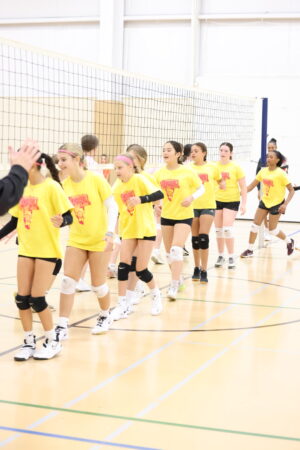🧠 Training to “Read and React” Under Pressure
A question to ask: Will training under pressure make your game or play better? The program highlights the need to “read the court and react with precision,” which is crucial for high-level volleyball. Here are key techniques to improve your decision-making and performance when the game is on the line:
1. Anticipation and Scanning (The “Read”)
- Pre-Contact Cues: Train your eyes to focus on specific body language before the opponent touches the ball.
- Attacker: Watch the hitter’s approach angle, contact point (is the wrist snapped high or pulled?), and shoulder position. This dictates where the ball will likely travel.
- Setter: Look at the setter’s eyes, hips, and hands. Do they turn their shoulders? Do they jump set? The moment before contact is critical for anticipating a dump or a quick set.
- Peripheral Awareness: When defending, don’t tunnel vision on the hitter. Use your peripheral vision to quickly register where your blockers are and where your defensive teammates are positioned. This instant processing helps you locate the open court space you need to cover.
2. Mental Repetition (Visualization)
- High-Pressure Scenarios: Before practice or a match, dedicate 5-10 minutes to mentally running through high-stress plays:
Example: “It’s 24-24 in the fifth set. The serve comes to me. I pass it perfectly. I move to cover the setter. The block is split. I need to dig the line shot.”
- Muscle Memory for Decision-Making: Visualization helps build cognitive muscle memory, speeding up your reaction time when these situations occur in real life.

3. Reaction Drills (The “React”)
- Constraint-Based Training: The most effective way to train reaction is by limiting thinking time.
- “Call Out” Drills: Have a coach or teammate call out the target area (e.g., “Seam!” “Line!” “Deep Corner!”) right as the ball is hit, forcing the defender to move instantly based on the verbal cue.
- Fatigue Drills: Practice defense and passing at the very end of a demanding practice. Being physically tired while still needing to maintain precision simulates the pressure of the final points in a close match.
This Junior Elite program is designed to provide the structured training necessary to turn these mental and physical skills into second nature.
